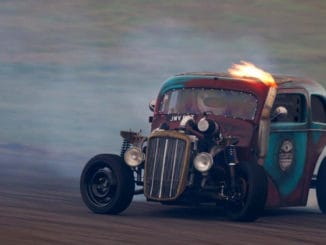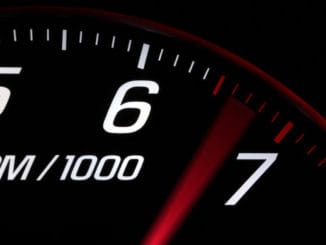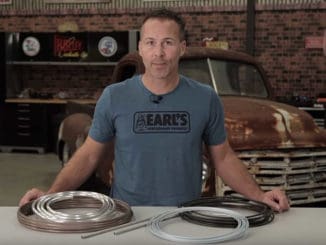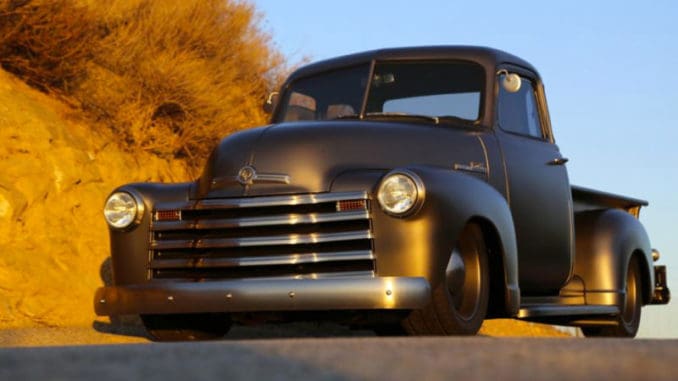
by Pete Evanow
Today, the term “hot rod” has many different interpretations. Let’s call those interpretations “factions.” And within each faction, there are subcategories.
Naturally, everything is open to individual opinion. However, most hot rod enthusiasts do agree that the sport, field, industry, hobby — whatever one wants to call it (a passion, perhaps) — is mostly democratic; everyone simply does whatever they want to their cars and all vehicles peacefully coexist, whether they are true originals, street rods, rat rods or high priced “retro” custom reproductions.
To Each His Own
As for a true definition of what a hot rod is, well, that certainly is up for debate. According to many sources, there isn’t any real answer to who coined the term “hot rod,” nor when it originated.
However, the general consensus is that the hot rod itself has roots going back to the 1930s when people discovered how to “accessorize,” or, more to the point, modify their car so that it would go faster.
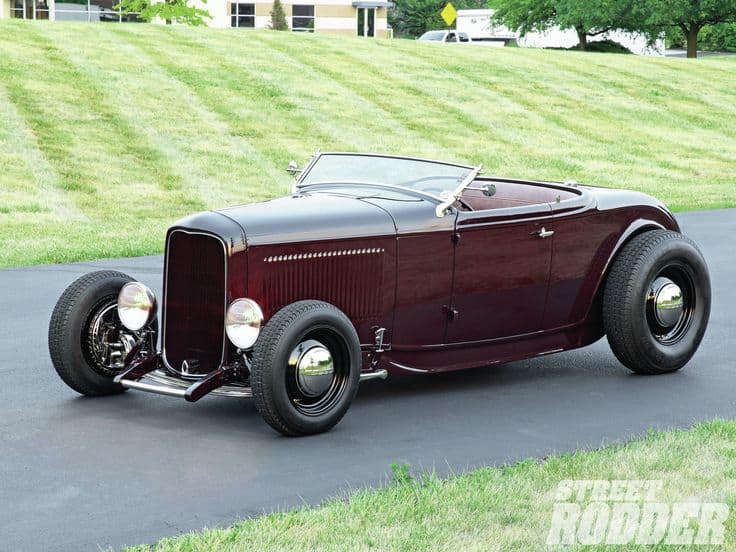
But hot rodding really became popular essentially after World War II, with its strongest protagonists in California; people who were seriously transforming old Fords (primarily) into powerful, lightweight, volatile racing machines, some with flames adorning the hoods and doors, some left black and menacing, all an individual expression of personality and horsepower.
The sport/fascination/habit became mainstream as mechanics matured into entrepreneurs, developing parts, techniques, and businesses that allowed enthusiasts to convert these once abandoned or seriously neglected roadsters and hardtops into viable vehicles for the street and track. As time went on, the phenomenon also became a valued art form.
Fast forward to today and the ’32 Deuce with its famous Ford flathead is now 75 years old — the subject of many books (Wally Parks NHRA Motorsports Museum Executive Director Tony Thacker’s among the best of them), celebrations and honors. Hot rodding has been around for a long time but has taken on many permutations and transgressions.
The price for admission, however, has seen the most serious modification. For some, it’s still about a cheap thrill; hence, the birth of the rat rod. For others, it’s all about a mid-range six-figure ride, a.k.a. the “trailer queen.” In between, there are those restoring cars and pickups from several eras, ever mindful of cost, period authenticity and practicality, while others want to add modern elements to their creation — a crate motor and 22-inch wheels — thus, the street rod.
Hot Rod Business
And the industry itself? Thanks to these separate, yet equally successful silos, it has never been better. Nor more crowded. With a number of restorers, designers, and “motor architects” enjoying national and international success, due in part to several high profile television shows on a wide variety of cable networks (The Learning Channel?!), hot rodding is enjoying a well-deserved new breath of life as well as a new round of entrants.
This time, it’s both baby boomers who have the bread to buy the iron they couldn’t afford when they were younger, and a new generation of young adults who revere a different era, one populated in part by the tough kids of ’50s movies and TV — Brando, Dean, Marvin, even McQueen — who reflected a certain outsider’s point-of-view; individual, wary, cagey.
They mix this with primer, tattoos, and red lipstick and bring in a whole new, equally acceptable look. “The guy with a rat rod usually has dirt under the nails and any money in his wallet goes for beer and smokes and keeping his ride going,” wrote one blogger in describing the genre of participants. Another wrote, “The rat rod is a daily driver that is out of the ordinary and has a certain ‘owner’s flair’ to the build.” Perhaps it could be said that it is a hot rod in its purest, or rawest, form.
“The fact is, hot rodding’s lineage is pretty easy to trace to get where we are now,” said Stuart Duncan, co-owner of J.W. Rod Garage of Belgium, WI. “The benchmark for splitting time is probably the Tri-5s — the small block Chevy of the ’55, ’56, and ’57 Chevys that are so historic.
These have gotten expensive, so people then focused their attention on the ’60s muscle cars up to about 1973 when the new smog rules made most cars gutless and killed the enthusiasm.”
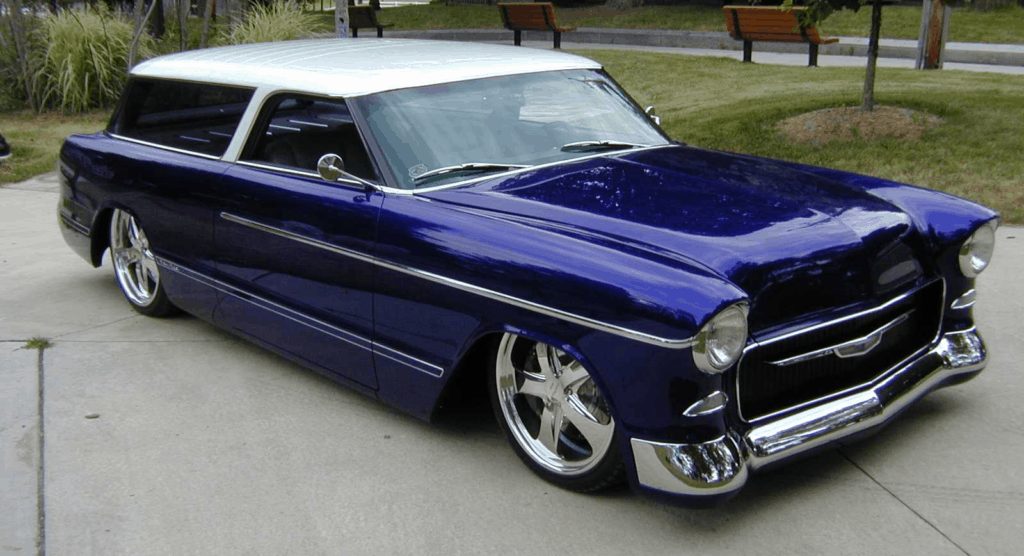
With most of the pre-war vehicles used up and the countryside thoroughly scoured for vintage iron, interest has turned to the next available model lines. This helped explain the huge explosion in ’60s muscle cars (and their relatives) and how their values quickly moved out of reach for the average hot rodder.
As a result, many have moved to less desirable cars and replaced their motors, brakes, and trannys with products provided by both the OEMs and the aftermarket. Even cars from the 1980s are now getting attention, with engines replaced with factory-direct crate motors, big brakes, and larger tires and wheels, all readily available and easy, albeit expensive, to bolt-on.
For those whose wallets are a bit fatter than others, there are the so-called “G-machine$” — as some have called them: the heavily restored originals as well as the retro-inspired reproductions. The aftermarket has responded to the demand for vehicles of a certain era and has created new dyes and molds that churn out steel ’67 and ’68 Mustang Fastback shells, as well as ones from the Tri-5 era as well as vintage Ford bodies, among others.
These shells can run many thousands of dollars but are as close to the real thing — and certainly more reliable. The real demand is that they are made of steel and not fiberglass, which brings with it a certain negative connotation from the purists in the sport.
Some of those said purists have stated that while they have nothing against these types of street rods, ones that come with thousands of dollars in custom paint and graphics, and are adorned with billet aluminum, digital gauges, air conditioning, and miles of chrome, they don’t feel the aptly represent the true hot rod.
“Today, one can buy everything new from the factory or a builder,” Duncan says. “You can build a ’32 Ford without a single Ford product or a ’69 Camaro without an original Chevy part.”
So, what constitutes a true hot rod? The roadster that uses a lot of original and old parts and follows the styles popular from post-WWII to the 1960s? Or the new rat rod, which is even more of a throwback to the original era, the modern-day “jalopy” that favors a certain patina or bare metal finish; that is purposely left as an unfinished hot rod?
Does it really matter? Chevy has tried to incorporate a hot rod style in its factory line-up with the SSR convertible pickup that recorded lackluster sales for its four-year lifespan, and now the more successful, but underpowered HHR.
Parent GM rolled out the EFIJY concept to considerable applause. EFIJY is a radical pillarless custom coupe boasting V8 power with a Corvette underbody and Soprano Purple paintwork. Press releases referenced the car, built by GM’s Holden (Australia) division, as “reinterpreting the classic design cues of the iconic 1953 FJ Holden. It delivers retro, mumbo, and gizmos in one glorious package.”
Even the Aussies get it. Bottom line: anything goes. Today, there are more choices than ever, more products and opportunities than ever, and depending on your bank account, any number of levels in which one can play. Thus, the question as to whether one wants a hot rod, street rod, or rat rod really boils down to “how much you got?”
Copyright © autoMedia


